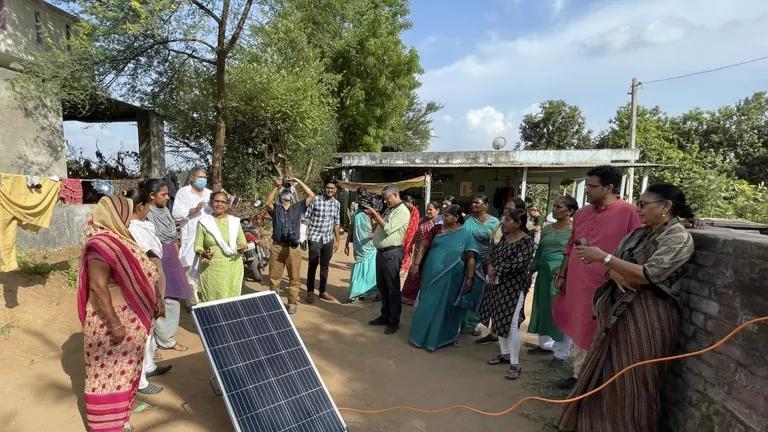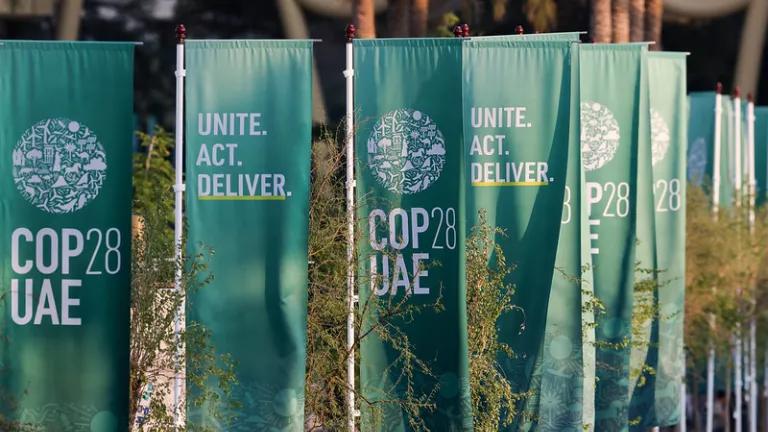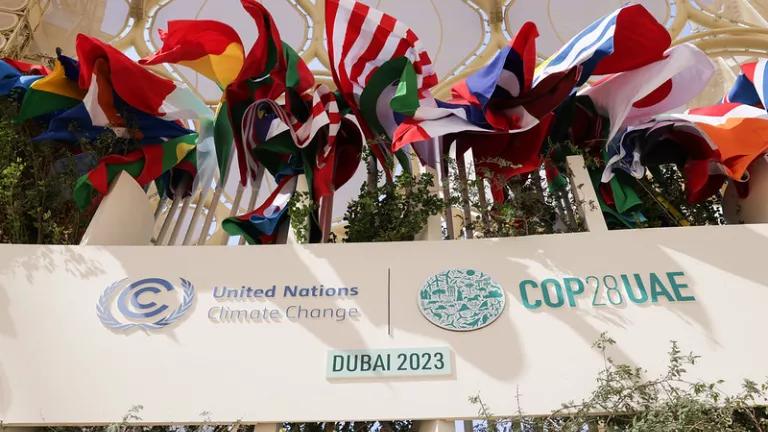India Could Create Millions of Jobs Through Renewable Energy
According to a new report, India’s renewable energy sector could potentially employ around one million people by 2030, which would be ten times more than the existing workforce.

A worker installing rooftop solar panels on a building in rural India
Co-authored with Charu Lata and Akanksha Tyagi
In the past year, India has seen multiple waves in an ongoing pandemic, increases in extreme weather events including heatwaves, floods, droughts, growing economic instability, and a spotlight on global inequities: climate disasters are striking with increasing severity, often hammering places where people are already vulnerable. The year 2021 also brought new climate announcements from India, which shows that countries can create jobs, protect health, and combat the climate crisis. With a median age of 28 years, India’s economic growth and employment generation are a priority today and well into the future. Fortunately, India’s renewable energy ambitions can help reach the government’s multiple goals of climate resilience, employment generation, energy independence, and economic development.
According to a new and updated NRDC, CEEW and SCGJ report, “India’s Expanding Clean Energy Workforce: Opportunities in The Solar and Wind Energy Sectors,” expanding clean energy has huge employment and economic potential: reaching its goal of 500 GW of non-fossil fuel energy sources by 2030, India can create 3.4 million new clean energy jobs providing employment to over a million people. A large chunk of these jobs will likely be generated through distributed renewable energy that creates local employment opportunities and brings transition closer to communities. Clean energy jobs have the possibility of greatly improving livelihoods, building climate resilience, and supporting India’s national clean energy and employment goals, all at the same time.

Source: NRDC,CEEW, SCGJ
Key findings
- Huge future employment potential: India can create about 3.4 million jobs (short and long term) by installing 280 GW solar and 140 GW wind capacity as it moves towards accomplishing its goal of 500 GW non-fossil electricity generation capacity by 2030.
- Already a significant employer: Wind and solar energy markets already employ a workforce of 111,400 people. Utility-scale and rooftop solar are the dominant employers with a shared 77% market share in the financial year (FY) 2021.
- Ten times larger: India’s renewable energy sector could potentially employ around one million people by 2030, which would be ten times more than the existing workforce.
- COVID-19 impact: Expectedly, COVID-19 negatively impacted the Indian renewable market. In comparison to FY 2019 where 12,400 new workers were employed in the sector, only 5,200 new workers were employed in FY 2020 and 6,400 were employed in FY 2021.
- A big focus on training for clean energy jobs: More than 100,000 people have been trained between 2015 and 2021. 78,000 trainees have been certified under the national-level solar energy Suryamitra training program.
- Integrating clean energy skills: The Skills Council for Green Jobs continues to integrate environmental awareness into job training across skilling programs through “Green National Occupation Standards” for the workplace.
Responding to the new analysis, Dr Arunabha Ghosh, CEO, CEEW said: “India’s ambitious renewable energy targets provide an opportunity to deliver on jobs, growth and sustainability while transitioning to a low-carbon economy. The upcoming Union Budget must especially focus on scaling up rooftop solar, mini and microgrid systems, and domestic solar manufacturing to maximize the employment opportunities in the sector. Further, to accelerate the deployment of solar parks and increase the uptake of decentralized renewable energy applications such as solar pumps and rooftops in rural India, it would be critical to train the rural youth and make them employable in various parts of the renewables ecosystem.”
Dr. Praveen Saxena, CEO of the Skill Council for Green Jobs, added, “Over 78,000 workers have been trained till date by the government. To meet the growing demands of India’s renewable energy sector, we will now focus on improving technical competency of skill development centers, deepening penetration of training institutes in smaller cities and rural areas, increasing collaborations with industry, constantly upgrading training programs, and creating a larger pool of skilled trainers.”
There is a significant opportunity to combine the government’s job creation and energy transition goals. The following recommendations can help:
- Higher focus on decentralized renewable energy (DRE) sources like rooftop solar, mini and micro-grid systems can significantly increase the employment opportunities to achieve India’s 500 GW non-fossil fuel energy target. The distributed nature of these projects makes them more labor intensive than utility-scale projects thereby increasing the jobs created across the project deployment cycle.
- Strengthen domestic manufacturing of various technology components to exploit the untapped employment potential and meet the requirements of the 500 GW target.
- Promote rural skill development programs to take the transition closer to the community. Our research indicates that the availability of a skilled local workforce can accelerate the deployment of solar parks and mini/microgrid projects.
- Regularly update the skilling curriculum through periodic industrial engagements to bridge the skill gap and ensure timely availability of skilled workforce.
- Strengthen transmission and distribution networks to integrate the growing intermittent RE in the coming years. A robust grid and a flexible power system with storage are essential to integrate 450 GW renewables and serve end-users. In addition, land acquisition support by the government will help in clearing a common bottleneck for clean power plants and grid projects.
This new report is an updated version of the executive summary released at COP26 in Glasgow.
Charu Lata is Lead Electric Mobility and Clean Energy Expert Consultant with NRDC's India Program
Dr. Akanksha Tyagi is Programme Associate with CEEW's Renewables Team




